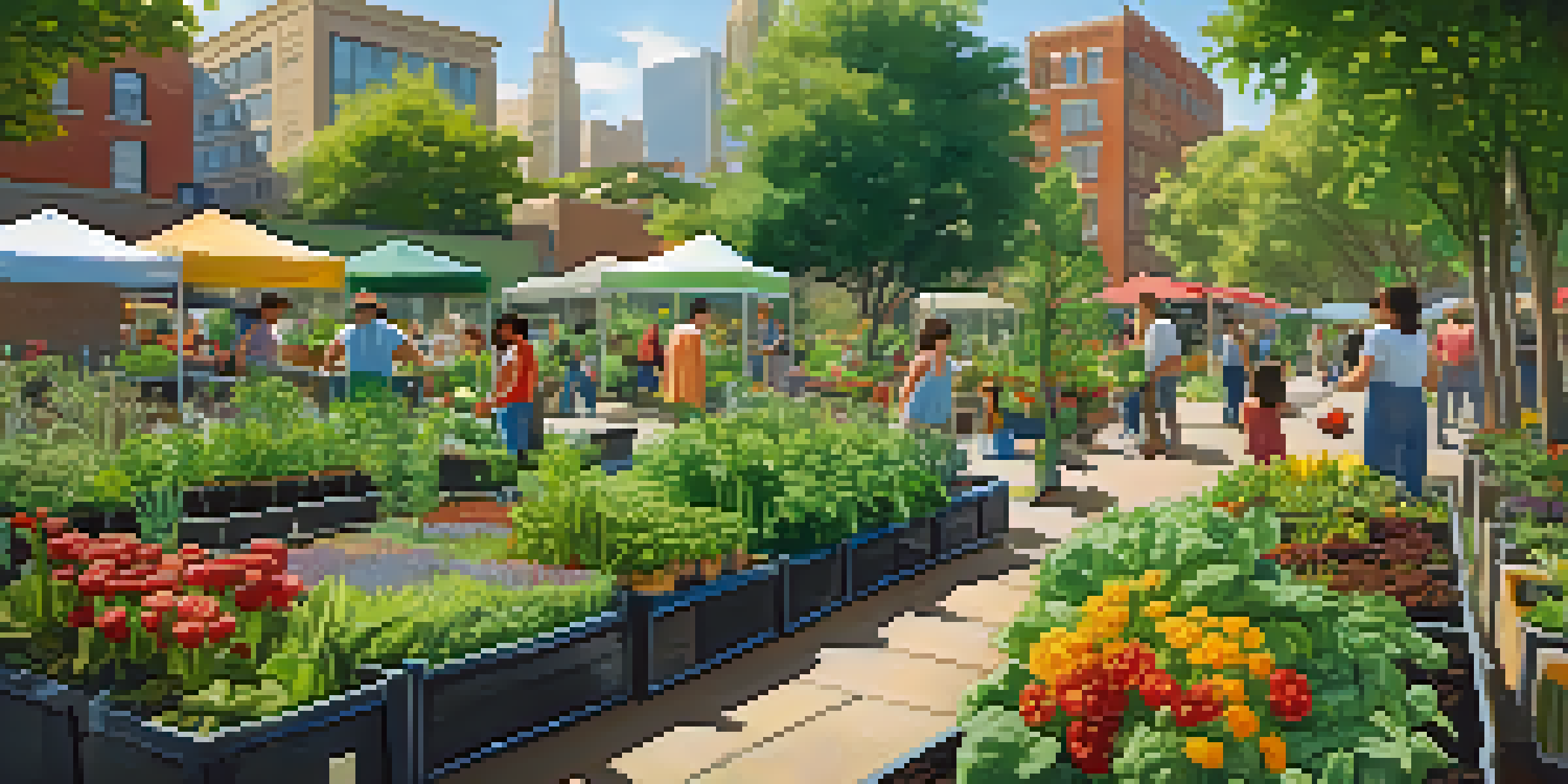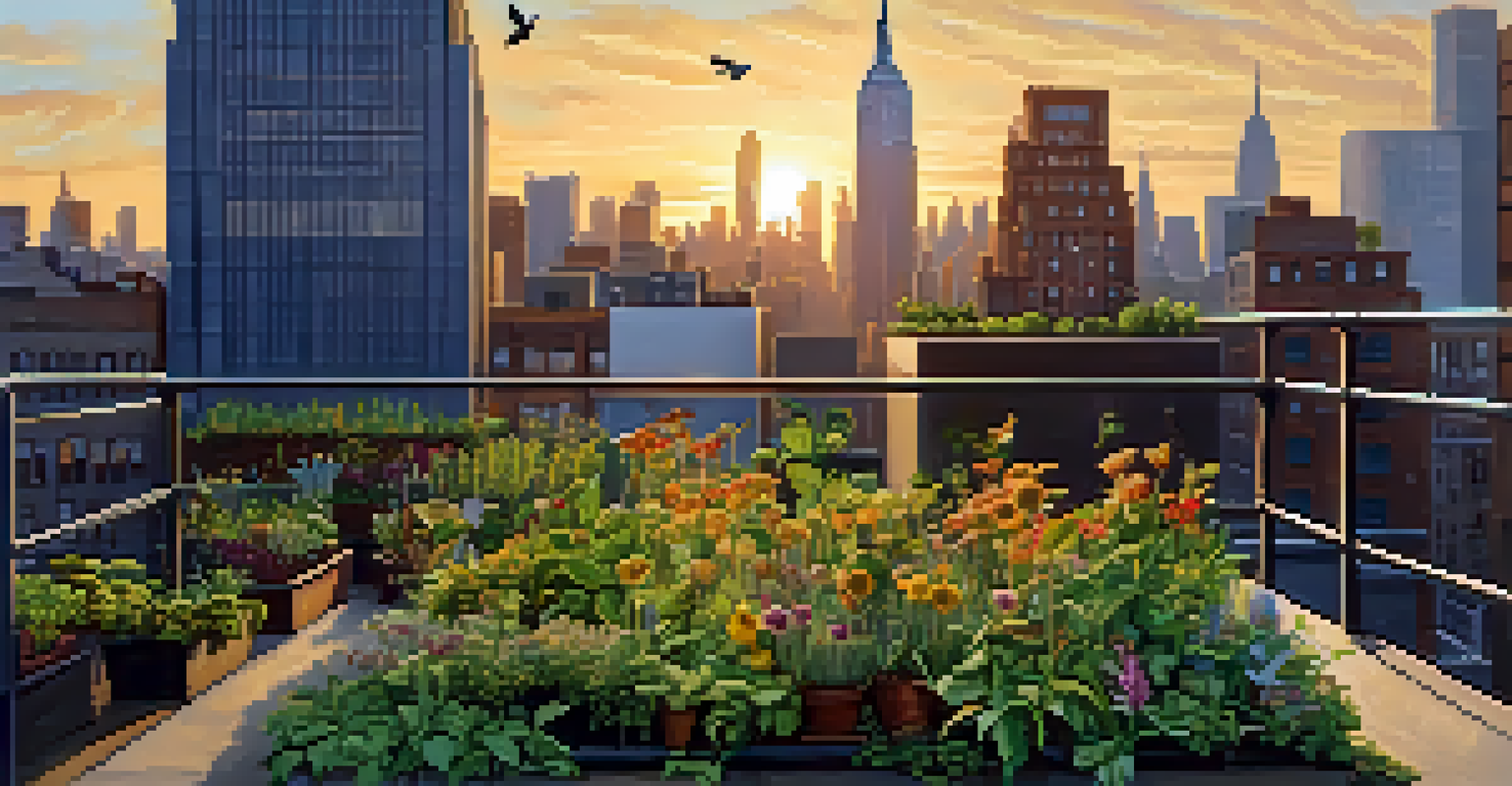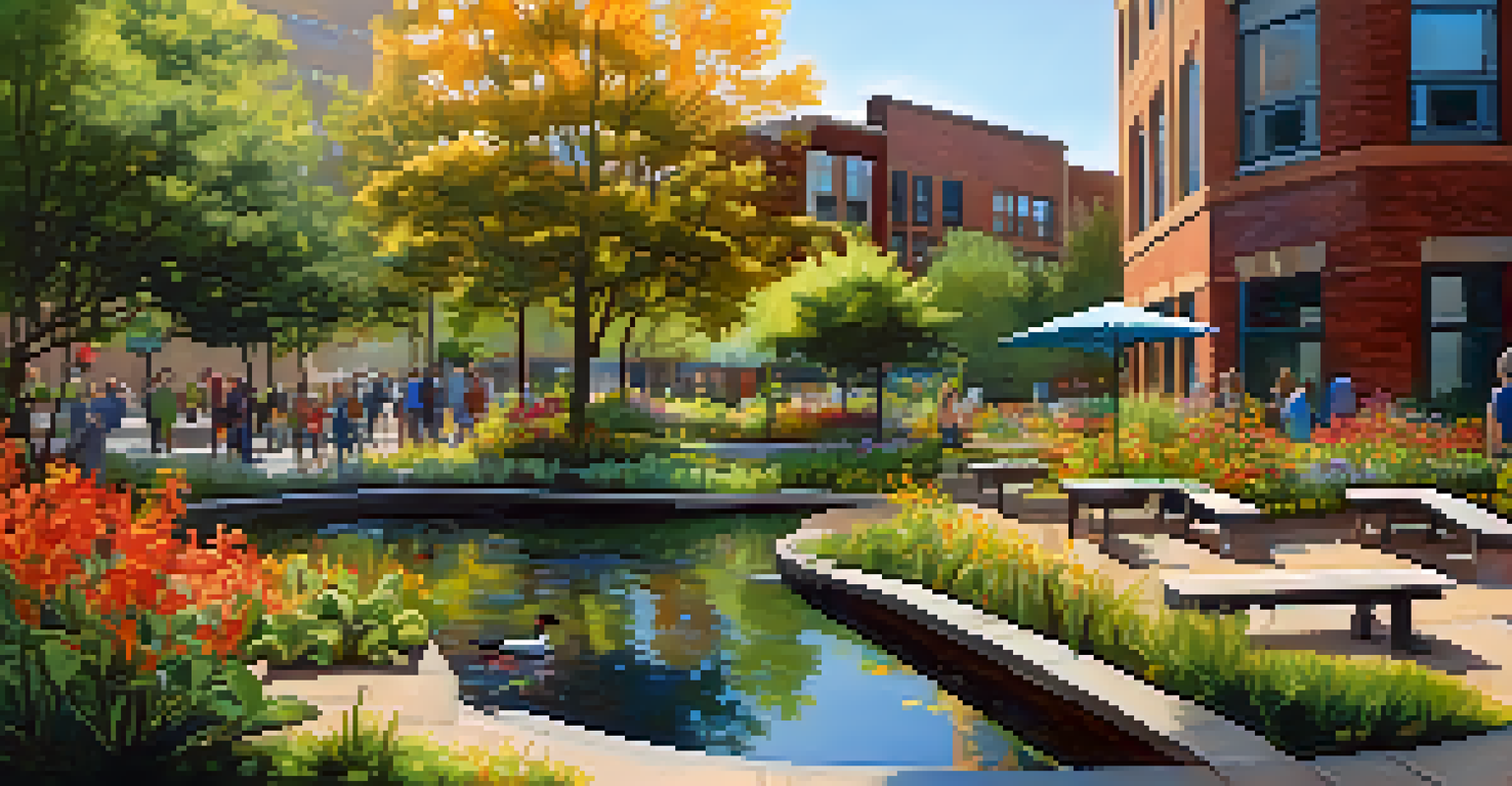The Role of Urban Gardens in Promoting Biodiversity in NYC

Introduction to Urban Gardens and Biodiversity
Urban gardens are more than just patches of green in bustling cities; they play a crucial role in enhancing biodiversity. In New York City, where concrete often dominates, these gardens serve as vital habitats for various plant and animal species. By incorporating a variety of plants, urban gardens can mimic the diverse ecosystems typically found in nature.
The best time to plant a tree was twenty years ago. The second best time is now.
Biodiversity refers to the variety of life in a particular habitat, and it’s essential for maintaining healthy ecosystems. Urban gardens can introduce native species that attract pollinators such as bees and butterflies, which are critical for food production and overall ecological health. The presence of these species helps create a balanced environment, benefiting both the gardens and the city.
Moreover, urban gardens offer a unique opportunity for city dwellers to connect with nature. This connection not only fosters a sense of community but also raises awareness about the importance of biodiversity. When people see firsthand the benefits of these green spaces, they are more likely to support conservation efforts.
Types of Urban Gardens in NYC
New York City boasts a variety of urban garden types, each with its unique characteristics and benefits. Community gardens, for example, are often managed by local residents who grow food, flowers, and herbs, creating a shared space that promotes both social interaction and biodiversity. These gardens can also provide educational opportunities for children and adults alike.

Rooftop gardens are another innovative solution that utilizes otherwise unused space atop buildings. These gardens not only contribute to biodiversity but also help mitigate urban heat, improve air quality, and provide insulation for buildings. By transforming rooftops into green spaces, New Yorkers are effectively turning the city into a more sustainable environment.
Urban Gardens Boost Biodiversity
Urban gardens in NYC enhance biodiversity by providing habitats for native species and attracting vital pollinators.
Lastly, pocket parks are small green spaces found throughout urban areas, often tucked between buildings or at street corners. They might be small in size, but their impact on local biodiversity can be significant. These parks can attract various wildlife, providing essential habitats in the heart of the city.
Benefits of Urban Gardens for Local Wildlife
Urban gardens serve as essential sanctuaries for local wildlife, offering food and shelter in an otherwise inhospitable urban landscape. By planting native species, gardeners can attract a range of wildlife, from birds and butterflies to beneficial insects like ladybugs. This diversity not only enhances the beauty of the gardens but also contributes to a healthier ecosystem.
In every walk with nature one receives far more than he seeks.
Pollinators, in particular, benefit greatly from urban gardens. As cities expand, natural habitats are lost, and pollinators often struggle to find food sources. Urban gardens equipped with flowering plants provide a crucial lifeline for these species, ensuring they can thrive and continue to support the pollination of food crops.
Additionally, urban gardens can promote the presence of other wildlife, such as small mammals and amphibians. By creating different layers and structures within gardens, such as shrubs and water features, urban gardeners can cater to various species, promoting a rich tapestry of life in the city.
How Urban Gardens Combat Climate Change
Urban gardens play an important role in combating climate change by enhancing urban resilience. They help mitigate the urban heat island effect, where cities become significantly warmer than surrounding rural areas due to human activities. Green spaces can lower temperatures by providing shade and releasing moisture into the air through a process called transpiration.
Moreover, these gardens improve air quality by absorbing carbon dioxide and releasing oxygen. Plants act as natural filters, removing pollutants from the air and providing cleaner, healthier environments for city residents. This is particularly important in densely populated areas, where air pollution can have serious health implications.
Community Engagement in Gardening
Urban gardening fosters community engagement and pride through collaborative efforts to create and maintain green spaces.
Finally, urban gardens contribute to stormwater management by absorbing rainwater and reducing runoff. This helps prevent flooding and protects local waterways from pollution. By incorporating green infrastructure, cities can create a more sustainable environment that supports biodiversity and human well-being.
Community Engagement Through Urban Gardening
Urban gardening fosters community engagement by bringing people together to work towards a common goal: creating and maintaining green spaces. Community gardens often rely on volunteers who share knowledge, resources, and a passion for gardening. This collaborative spirit not only strengthens community bonds but also promotes a sense of ownership and pride in local green initiatives.
Additionally, urban gardens can serve as educational hubs, teaching residents about sustainable practices and the importance of biodiversity. Workshops, events, and school programs can all be hosted in these spaces, helping to cultivate a culture of environmental stewardship. By providing hands-on experiences, urban gardens empower individuals to make more sustainable choices in their daily lives.
This community aspect also extends to the benefits of fresh food. Many urban gardens focus on growing fruits and vegetables, providing access to healthy, locally grown produce. This not only addresses food deserts in certain neighborhoods but also encourages people to adopt healthier eating habits, further enhancing community well-being.
Challenges Facing Urban Gardens in NYC
Despite their numerous benefits, urban gardens in NYC face a variety of challenges that can hinder their effectiveness. Space is often limited in densely populated areas, making it difficult to establish and maintain gardens. Additionally, the competition for land can lead to conflicts over property usage and priorities among community members.
Funding and resources can also be a significant hurdle for urban gardening initiatives. Many gardens rely on grants, donations, and volunteer efforts to sustain their operations, which can fluctuate and create uncertainty. Without consistent support, it can be challenging to maintain the infrastructure and ongoing programming necessary for successful gardens.
Urban Gardens Combat Climate Change
These gardens mitigate climate change effects by lowering temperatures, improving air quality, and managing stormwater.
Moreover, urban gardens must contend with environmental factors such as pollution and invasive species. These challenges can threaten the health and viability of the plants and wildlife that urban gardens aim to support. Addressing these issues requires collaboration and innovative solutions from both gardeners and city planners.
Future of Urban Gardens in Enhancing Biodiversity
The future of urban gardens in NYC looks promising, particularly as awareness of biodiversity and sustainability continues to grow. With increasing interest in green spaces, more residents are likely to advocate for the establishment and preservation of urban gardens. This momentum can lead to greater support from local governments and organizations dedicated to promoting biodiversity.
Innovative technologies and practices, such as vertical gardens and hydroponics, are also enhancing the potential for urban gardening. These methods can maximize limited space and allow for year-round gardening, further expanding the possibilities for biodiversity in urban environments. As more people embrace these solutions, urban gardens can become even more integral to city life.

Ultimately, urban gardens represent a vital opportunity for cities to connect people with nature while promoting biodiversity. By continuing to invest in these green spaces and fostering community involvement, NYC can set an example for other cities to follow, demonstrating the incredible benefits of urban gardening for both people and the planet.